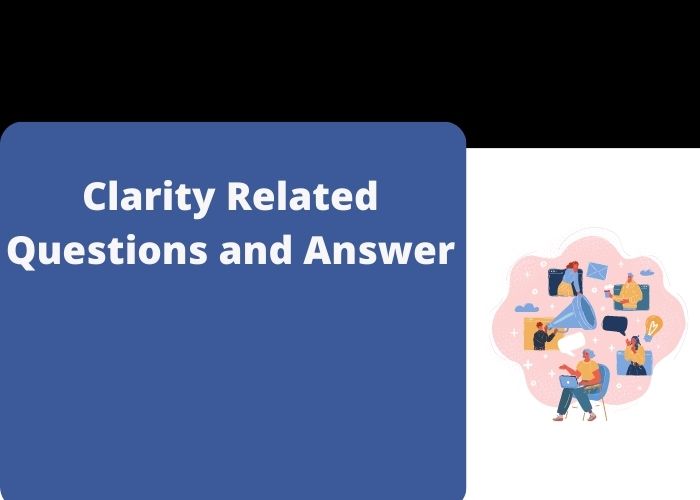Q1. What is empathy?
A1. Empathy is the ability to understand and share the feelings of another person.
Q2. What are the three components of empathy?
A2. The three components of empathy are cognitive empathy, emotional empathy and compassionate empathy.
Q3. How does empathy help in communication?
A3. Empathy helps in communication by allowing people to better understand each other, build trust, and create a stronger connection.
Q4. What is the difference between empathy and sympathy?
A4. The primary difference between empathy and sympathy is that empathy involves understanding and sharing another person’s feelings, while sympathy involves feeling sorry for another person’s plight.
Q5. What are the benefits of empathy in communication?
A5. The benefits of empathy in communication are improved understanding, increased trust, more meaningful conversations, and better relationships.
Q6. How can empathy be improved?
A6. Empathy can be improved by actively listening to others, understanding their perspectives, and learning to recognize and respond to emotions.
Q7. What are the four steps of active listening?
A7. The four steps of active listening are paying attention, reflecting back, responding, and summarizing.
Q8. What is the importance of body language in empathy?
A8. Body language is an important part of empathy, as it can help to communicate understanding and create a connection with the other person.
Q9. What is the difference between empathy and sympathy in communication?
A9. The primary difference between empathy and sympathy in communication is that empathy involves understanding and sharing another person’s feelings, while sympathy involves feeling sorry for another person’s plight.
Q10. How can empathy be used to resolve conflicts?
A10. Empathy can be used to resolve conflicts by understanding and acknowledging each party’s perspective, communicating effectively, and finding a mutually beneficial solution.
Q11. How can one show empathy through words?
A11. One can show empathy through words by using words like “I understand”, “I’m sorry”, and “How can I help?”.
Q12. What are the benefits of displaying empathy in the workplace?
A12. The benefits of displaying empathy in the workplace include increased team morale, better communication, increased productivity, and improved working relationships.
Q13. What is the difference between empathy and sympathy in customer service?
A13. The primary difference between empathy and sympathy in customer service is that empathy involves understanding and sharing another person’s feelings, while sympathy involves feeling sorry for another person’s plight.
Q14. How can one practice empathy in the workplace?
A14. One can practice empathy in the workplace by actively listening to others, understanding their perspectives, and learning to recognize and respond to emotions.
Q15. What is the importance of empathy in relationships?
A15. The importance of empathy in relationships is that it can help to create a deeper understanding and connection between two people.
Q16. How can empathy be used to build trust?
A16. Empathy can be used to build trust by understanding the other person’s perspective, communicating effectively, and building a strong connection.
Q17. What are some effective ways to communicate empathy?
A17. Some effective ways to communicate empathy are active listening, using appropriate words and tone of voice, and body language.
Q18. What is the difference between empathy and compassion?
A18. The primary difference between empathy and compassion is that empathy involves understanding and sharing another person’s feelings, while compassion involves being moved by those feelings and taking action to help.
Q19. What is the importance of empathy in communication?
A19. The importance of empathy in communication is that it can help to create a deeper understanding and connection between two people, and improve the quality of conversations.
Q20. How can empathy be used to improve customer service?
A20. Empathy can be used to improve customer service by understanding and acknowledging the customer’s perspective, communicating effectively, and finding a mutually beneficial solution.
Q21. What is the importance of empathy in leadership?
A21. The importance of empathy in leadership is that it can help to build trust and create a better working environment.
Q22. What are the benefits of empathy in relationships?
A22. The benefits of empathy in relationships are increased understanding, improved communication, better trust, and stronger connections.
Q23. How can empathy be used to create a better working environment?
A23. Empathy can be used to create a better working environment by understanding the perspectives of others, communicating effectively, and finding solutions that are mutually beneficial.
Q24. How can empathy be used to build better relationships?
A24. Empathy can be used to build better relationships by understanding and acknowledging the other person’s perspective, communicating effectively, and building a strong connection.
Q25. What are the benefits of empathy in customer service?
A25. The benefits of empathy in customer service are increased customer satisfaction, improved relationships, and better trust.
Q26. How can empathy help to build team morale?
A26. Empathy can help to build team morale by understanding the perspectives of others, communicating effectively, and finding solutions that are mutually beneficial.
Q27. How can one show empathy in difficult conversations?
A27. One can show empathy in difficult conversations by actively listening to others, understanding their perspectives, and learning to recognize and respond to emotions.
Q28. How can empathy be used to improve conflict resolution?
A28. Empathy can be used to improve conflict resolution by understanding and acknowledging each party’s perspective, communicating effectively, and finding a mutually beneficial solution.
Q29. What are some examples of empathetic communication?
A29. Some examples of empathetic communication are active listening, using appropriate words and tone of voice, and body language.
Q30. How can one practice empathy in everyday life?
A30. One can practice empathy in everyday life by actively listening to others, understanding their perspectives, and learning to recognize and respond to emotions.




